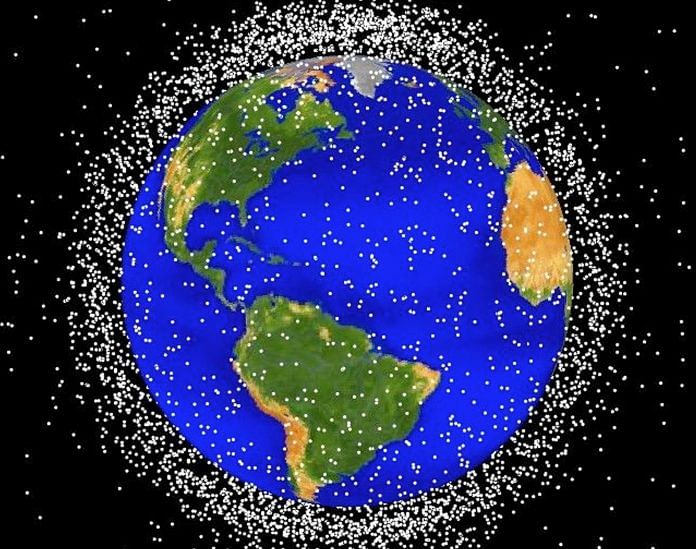More than 20,000 satellites, rocket pieces and collision fragments are orbiting earth & present a clear and present danger to satellite operations.
Last Saturday, the National Aeronautics and Space Administration launched the Ice, Cloud and Land Elevation Satellite-2, which will monitor Earth’s ice sheets, recording changes in ice thickness as small as half a centimeter. The satellite will allow us to see one consequence of our collective pressure on the planet’s environment. And yet it will, in a small way, also exacerbate another emerging global problem.
The U.S. Air Force — more precisely, the U.S. Strategic Command — is already actively tracking more than 20,000 satellites, rocket pieces and collision fragments bigger than a softball that are orbiting the earth, which together present a looming menace to satellite operations and everything that depends on them, including global positioning systems, telecommunications, weather forecasts and the internet. Over 50 years ago, when we first started putting satellites in orbit, we seemed small, and the earth very big. Now, with nearly 500 new satellites going up every year, our influence is no longer small. Congested space is another reflection of our entry into the Anthropocene — a new era of history in which everything about the earth and its climate, even the space around it, is profoundly affected by human activity.
NASA scientists began thinking about potential space overcrowding in the early 1970s, when the number of satellites in orbit was approaching 4,000. In an influential paper, space scientists Donald Kessler and Burton Cour-Palais made a rough estimate that, as the number of satellites grew, the risk of collisions would become an issue by the 2000s. They weren’t far off. In 2009, a U.S. commercial satellite collided with an inactive Russian communications satellite at a speed of some 26,000 miles per hour, creating two clouds of debris that rapidly dispersed throughout low Earth orbits, at anywhere from 400 to 1,000 miles above the earth.
More important, Kessler and Cour-Palais also pointed to a serious risk that would arise if the number of objects in low or medium Earth orbits became too high: A higher density of objects, they argued, makes it more likely that the secondary fragments created in one collision will in turn strike other objects. A sufficient density of debris could set the stage for a fragmentary chain reaction that could quickly render the entire space around Earth unusable.
Space scientist Carolin Frueh of Purdue University told me by email that while this analysis depends on many assumptions, some of which are debatable, “It seems to be beyond doubt that an increased space population leads to this effect.”
Incredibly, scientists now think we’re getting close to this critical stage, and that we urgently need to clean it up. There are lots of ideas being pursued by researchers who think of themselves as “space environmentalists.” This past weekend, a satellite launched in June began testing a technique to throw a net over pieces of space debris and pull them into trajectories that would lead to their burning up after atmospheric re-entry. That kind of approach might work on some of the largest objects, but researchers have other ideas for the smaller ones, such as employing the subtle periodic forcings of the sun and moon to gradually steer debris on easy pathways toward atmospheric re-entry.
Given the stakes, and human ingenuity, the chances are high that we’ll avoid the fragmentary catastrophe, which space scientists call the Kessler syndrome. But it’s certain that we’ve moved into a management era of near-Earth space. A space that even a few decades ago seemed unfathomably vast has become subject to perpetual monitoring and management, just so we can go on using it. The need for intense management will only grow if companies such as Boeing Co., OneWeb Satellites and SpaceX go on to deploy thousands of new satellites over the next decade or two.
The notion of the Anthropocene has generated some controversy, in part over the difficulty of deciding on when it began but also how it reflects a new geological phase of Earth history. But there’s no question that we’ve entered a profoundly distinct phase, with people having modified over 50 percent of the earth’s surface, generating geophysical flows of nitrogen and phosphorous larger than natural processes produce and dispersing plastic waste to every corner of the oceans.
Now add to that the very edge of space — already under perpetual human management. – Bloomberg






